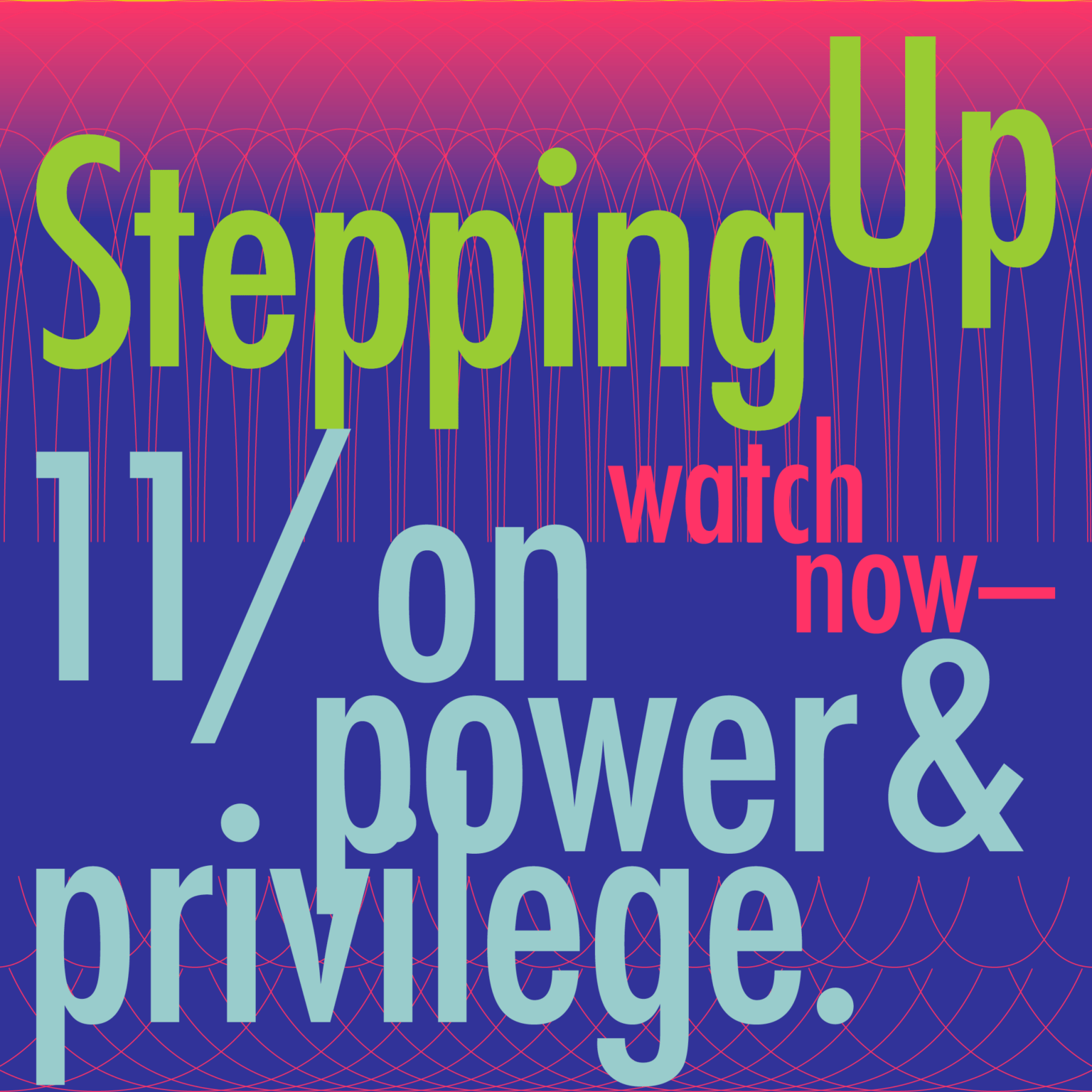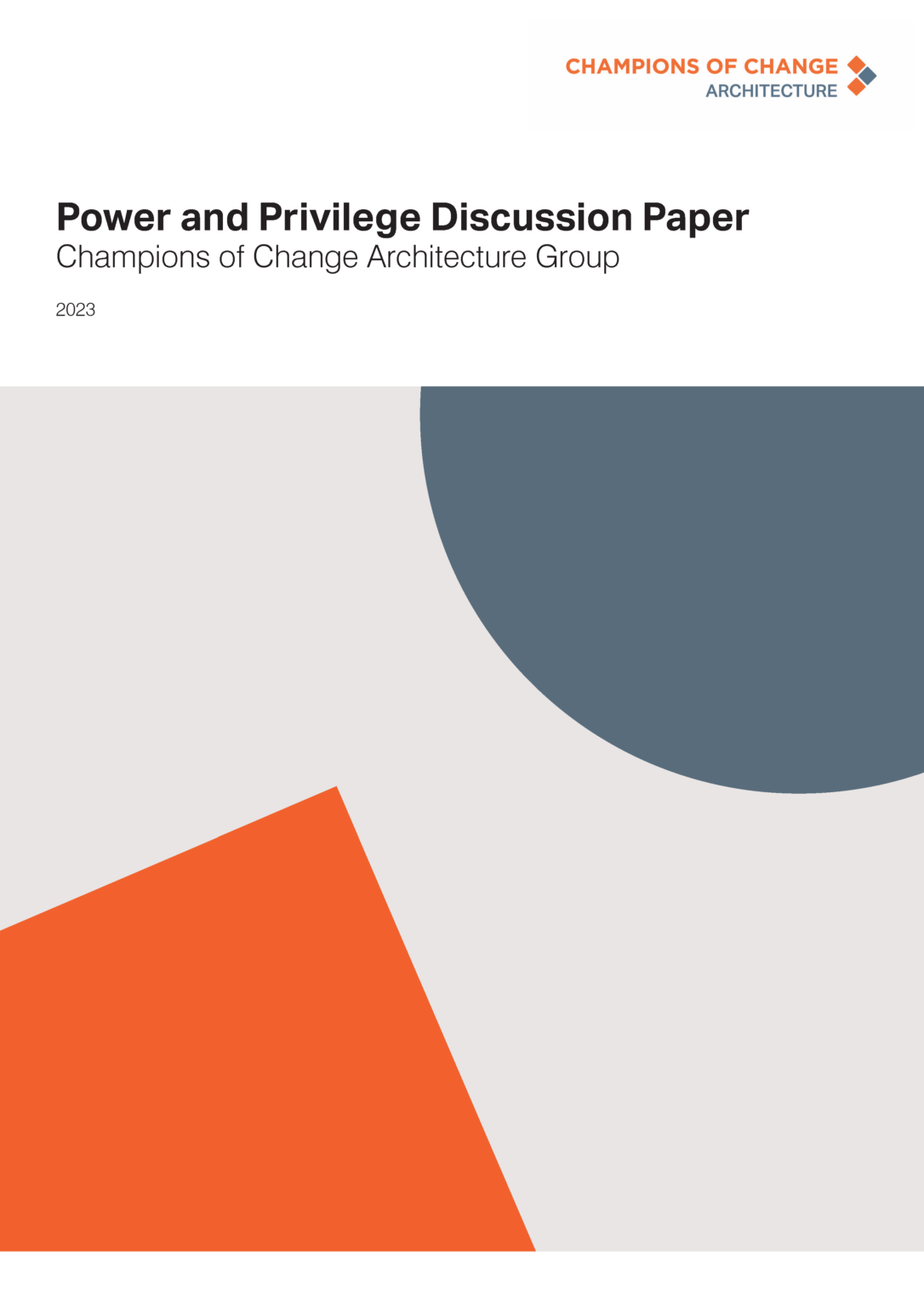How do power and privilege impact career progression and opportunity? The Champions of Change Architecture Group has conducted a demographic survey of practice leaders which provides a preliminary evidence base. They offer a set of recommendations to help understand the impact of privilege and how leaders can use their power to improve equity for others.
Paul Brace, Sally Hsu and Kit Ku explain the Executive Survey and key findings.
Mechanisms of power & privilege
The Power and Privilege discussion paper examines the impact of workplace power, dynamics and privilege on career progression – as barriers and enablers – within the Australian architectural industry.
Examining practices, systems and structures through
the lens of power and privilege helps reveal inequity and the structures that support it. This understanding enables us to begin to disrupt and reshape many of the barriers to inclusive gender equality. More specifically, once the mechanisms of power and privilege are understood, leaders can take action to ensure more equitable access to leadership pathways for all employees.
Grounded in the 2020 Executive Survey of senior leaders in large Australian architecture practice, the Power & Privilege discussion paper aims to make visible the systems of power and privilege in architecture. It offers support to practices in identifying the types of power and privilege that exist within their organisations and explores how leaders can use their power and privilege to drive change and improve equity for all.
What is in the discussion paper?
The discussion paper defines power and privilege and documents the key findings of a 2020 survey of 150 senior leaders in Australian architecture. This gathered information about demographics, social background, education, qualifications, work experience, financial background and career pathway to becoming a leader.
Key findings include:
- The overwhelming majority of the 150 architecture executives surveyed were men (70%), heterosexual (91%) and white (86%). Most are from middle to high socioeconomic background (75%).
- Half the executives surveyed were equity partners. Equity partners were more often men, aged 50 years or older, white, married, and from a higher socioeconomic background.
- Men were 1.9 times more likely to be an equity partner, while participants from higher socioeconomic backgrounds were twice as likely to be an equity partner than participants from a low/middle socioeconomic background. White participants were 3.4 times more likely to be equity partners than participants who were a person of colour.
- Over half the participants indicated that their current executive position was a result of strategic career planning (54%). A similar proportion indicated that they had an active mentor or sponsor to support their pathway to becoming an executive (56%). Most participants obtained their executive positions through internal promotion (81%) with at least six years of experience at the current practice prior to becoming an executive (54%) with no career break (65%).
- Men were twice as likely to attribute their executive position to strategic career planning. They are likely to have worked additional hours on weekdays and weekends. The majority of the executives did not have a career break.
- Participants with a low/middle socioeconomic background were more likely to have become an executive via an external job application, very likely to have more than 20 years prior industry experience and more likely to have previously worked at four or more practices, relative to participants with a high socioeconomic background.
Part 2 of the discussion paper locates the findings within a context of existing literature on privilege in professions and diversity within architecture and in relation to the “the Green Light Pathway to Power”, which is adapted here to architecture.
Part 3 offers practical advice for practices to recognise and address power and privilege dynamics that influence leadership within their organisation and the wider profession. It offers a practical exercise for leaders to undertake their own ‘green light pathway’ analysis and provides three case studies.
Jess Murphy and Kit Ku on why diverse leadership matters.
Further watching / reading

Class and connections can make or break a career, but does a class-ist culture limit the industry’s relevance? Sam Perversi-Brooks digs into the little-discussed issue of class.

Our background or class has inevitable impacts on our careers, reflects Phillip Nielsen, bringing obstacles but also opportunities for meaningful engagement.

How can leaders use their power and privilege to improve equity for all in practice? Watch this fascinating conversation about power and privilege with Paul Brace, Kit Ku and Sally Hsu.
Power and Privilege: A Talking Toolkit was developed by the Champions of Change Architecture Group, led by Bianca Hung, Kit Ku, David Tordoff and Emma Chrisp (Hayball), Sally Hsu and Tania Gordon (Bates Smart), Richard Stafford (DesignInc), Michael Drescher and Gemma MacDonald (DKO) and Tamara Kerr (SJB). The Executive Survey was conceived and developed by Paul Brace and Monica Edwards. Analysis was by Tyson Whitten.





















